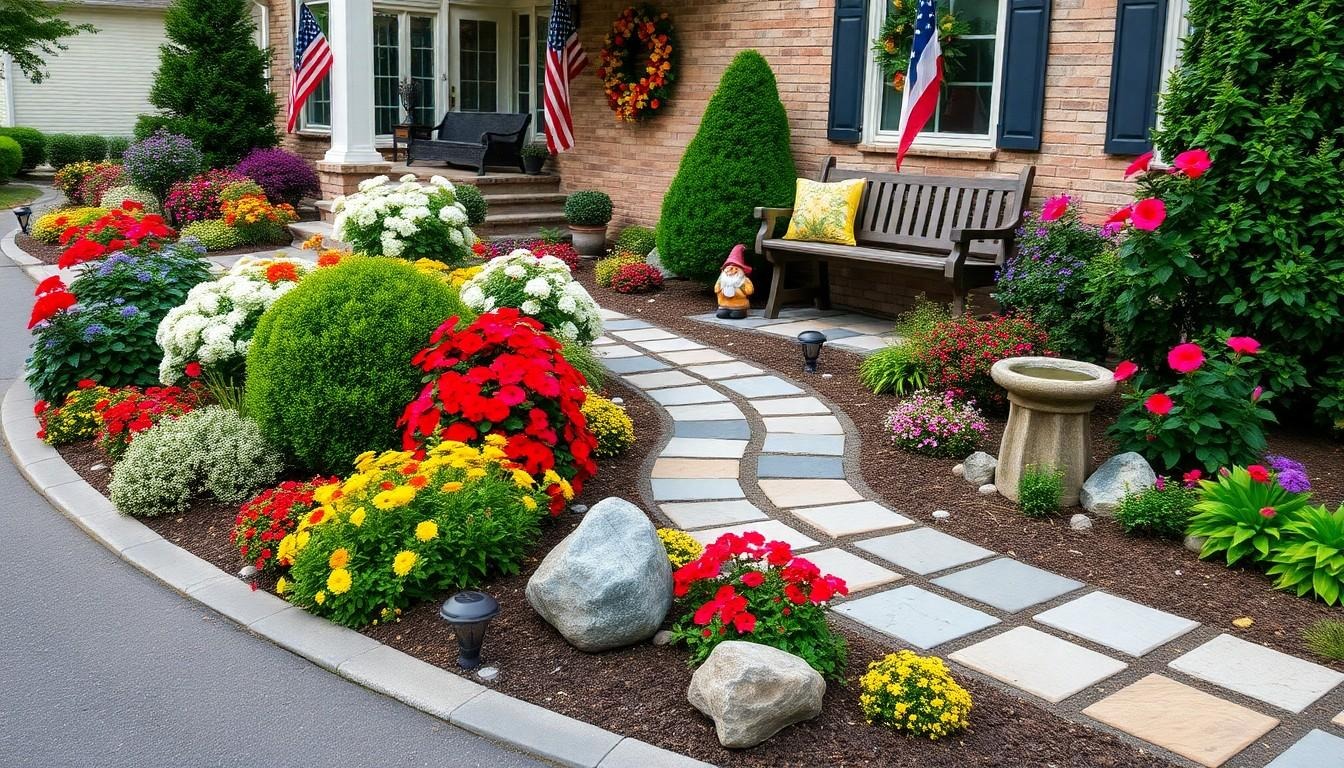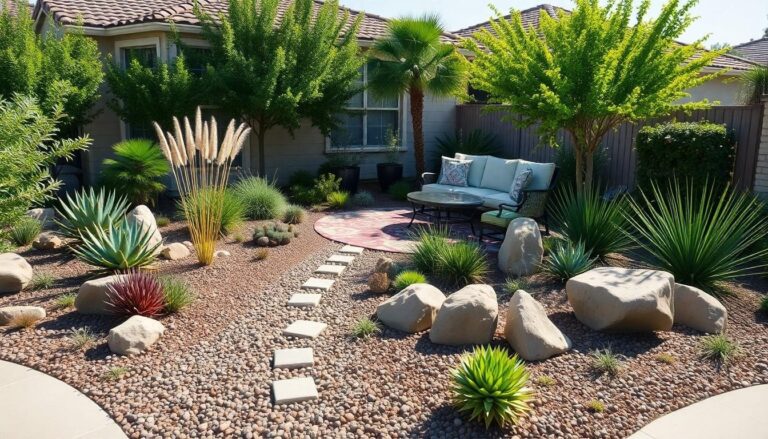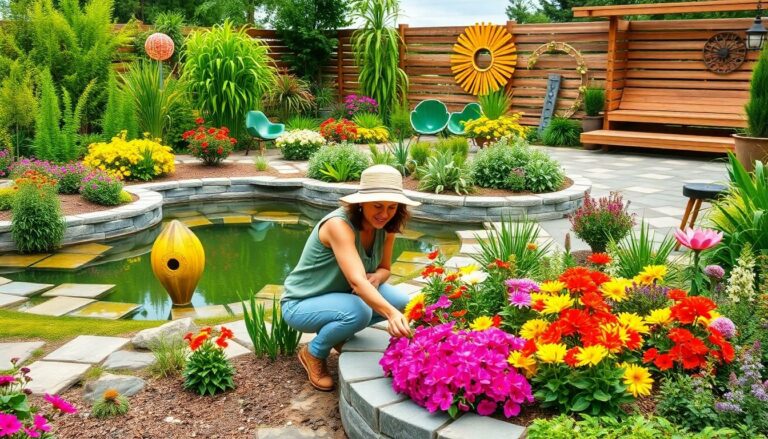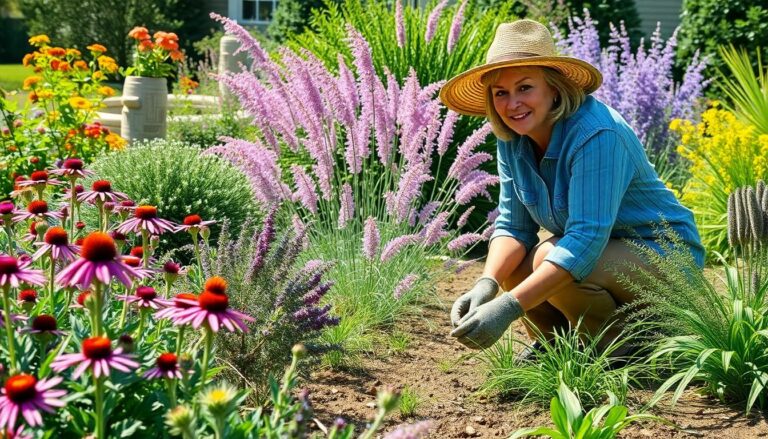A front yard is more than just a patch of grass; it’s the stage for first impressions. Whether it’s a family gathering or a surprise visit from the in-laws, a well-landscaped front yard can make anyone feel like they’ve just walked into a magazine cover. Who wouldn’t want to showcase their home with a splash of color, a sprinkle of creativity, and maybe even a quirky garden gnome or two?
Ideas For Front Yard Landscaping
Incorporating diverse plants adds life to a front yard. Select a mix of perennials and annuals for year-round color. Consider bold flower beds filled with contrasting colors to create vibrant displays. Use native plants for easier maintenance and sustainability.
Creating pathways enhances visual interest. Opt for materials like stone, gravel, or wood to design inviting walkways. Add borders with small shrubs or decorative stones to define edges.
Integrating outdoor lighting improves both aesthetics and safety. Use solar-powered lights to highlight pathways and focal points. Consider string lights or lanterns for a whimsical touch during evening hours.
Using decorative features elevates the overall design. Garden benches provide functional seating while acting as focal points. Birdbaths attract wildlife and add a serene vibe. Sculptures or unique planters serve as eye-catching accents.
Highlighting water features brings tranquility. Install a small fountain or pond for soothing sounds and movement. Surround water elements with lush plants for a serene atmosphere.
Utilizing seasonal decor enhances charm. Change displays with different seasons through wreaths, flags, or decorative pumpkins. This practice allows for ongoing creativity while keeping the yard fresh.
Incorporating sustainable practices benefits the environment. Consider installing a rain garden to manage runoff and support local wildlife. Xeriscaping encourages water conservation by utilizing drought-resistant plants.
Popular Landscaping Styles
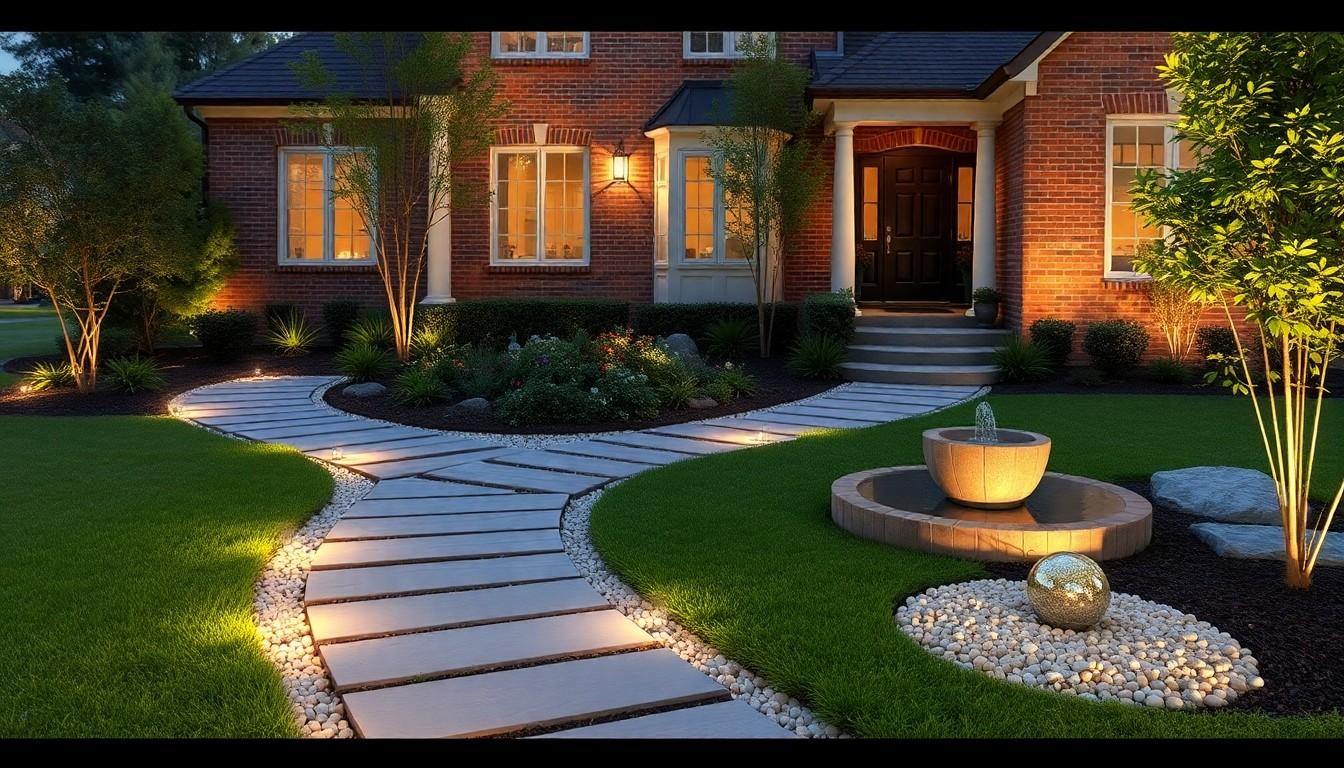
Exploring popular landscaping styles can inspire front yard transformations. Various approaches cater to different preferences, from sleek modern touches to timeless traditional features.
Modern Design Elements
Simplicity defines modern design. Clean lines and minimalistic aesthetics create an uncluttered look in front yards. Incorporating materials like concrete, metal, and glass enhances a contemporary vibe. Stone pathways or gravel beds often replace grass, accentuating the space’s elegance. Water features, such as reflecting pools or minimalist fountains, add tranquility while showcasing refined tastes. Strategic lighting highlights key elements, creating an inviting atmosphere during evenings.
Traditional Landscaping Features
Classic charm characterizes traditional landscaping styles. Symmetrical designs lead to a balanced appearance, often featuring neatly trimmed hedges and colorful flower beds. Elements like arched trellises and white picket fences evoke nostalgia and warmth. Planting fragrant roses or lilacs enhances sensory appeal, while brick walkways guide visitors to the entrance. Inclusion of structured flower arrangements provides a welcoming invitation. Seasonal decorations maintain visual interest throughout the year, reinforcing the home’s inviting nature.
Plant Selection Tips
Selecting the right plants enhances front yard landscaping significantly. Focus on choices that complement the design while thriving in the local environment.
Choosing Native Plants
Native plants offer several advantages for landscaping. These plants adapt well to local climate and soil conditions. They require less water and maintenance compared to non-native species. For example, California poppies flourish in dry conditions, while black-eyed Susans thrive in sunny spots. Additionally, native plants support local wildlife, including pollinators. Incorporate a variety to create visual interest and biodiversity in the yard. Selecting plants indigenous to the region fosters a sustainable ecosystem, enhancing the yard’s overall appeal.
Seasonal Color Considerations
Incorporating seasonal color keeps the front yard vibrant throughout the year. Plan for spring blooms like tulips and daffodils, followed by summer favorites such as sunflowers and coneflowers. Autumn can burst with colors from chrysanthemums and asters, while winter interest may include evergreens or ornamental grasses. Mixing early, mid, and late bloomers ensures continuous color. Consider using foliage plants alongside flowers for added texture and depth. Seasonal planning not only enhances beauty but also allows for long-lasting appeal in the front yard.
Hardscaping Options
Hardscaping adds structure and usability to a front yard, combining materials like stone, wood, and concrete to create functional elements. These features enhance the visual appeal while offering practical benefits.
Pathways and Walkways
Pathways contribute to the flow and accessibility of the front yard. Using materials such as pavers or gravel, homeowners can establish direct routes to front doors or gardens. Walkways should complement the overall design, ensuring they blend with surrounding landscaping. Curved paths create a more organic feel, guiding visitors seamlessly through the space. Incorporating borders with decorative stones or low-cut plants enhances visual interest. Planning for proper drainage reduces water accumulation, ensuring safety during wet weather.
Fencing and Walls
Fencing provides privacy and security while enhancing the front yard’s aesthetic. Options like wood, vinyl, or wrought iron offer distinct looks and levels of durability. Selecting a fence style that matches the home’s architecture ensures a cohesive design. Walls crafted from natural stone can function as both dividers and decorative features. Adding plants or climbing vines softens the appearance, creating a welcoming atmosphere. Maintaining a balance between openness and enclosure fosters a sense of comfort while enhancing the overall landscape design.
Sustainable Landscaping Practices
Sustainable landscaping practices incorporate eco-friendly techniques that benefit the environment. Implementing these practices enhances the aesthetic appeal of front yards while conserving resources.
Xeriscaping for Water Conservation
Xeriscaping focuses on designing landscapes that minimize water usage. This method utilizes drought-resistant plants that thrive in specific climates, reducing the need for irrigation. Incorporating mulch helps retain moisture in the soil, while strategically placed stones prevent erosion. Selecting native plants fosters biodiversity, attracting local wildlife and pollinators. The overall design creates a visually striking habitat that requires minimal maintenance.
Eco-Friendly Material Choices
Using eco-friendly materials contributes to sustainable landscaping. Opting for permeable paving allows water to penetrate the ground, reducing runoff. Recycled materials, such as reclaimed wood or bricks, provide unique aesthetics while minimizing waste. Stone walls and paths can enhance durability and blend seamlessly into natural surroundings. Prioritizing locally sourced materials decreases transportation emissions, making the project more sustainable. Emphasizing these choices promotes a beautiful and environmentally conscious front yard.

